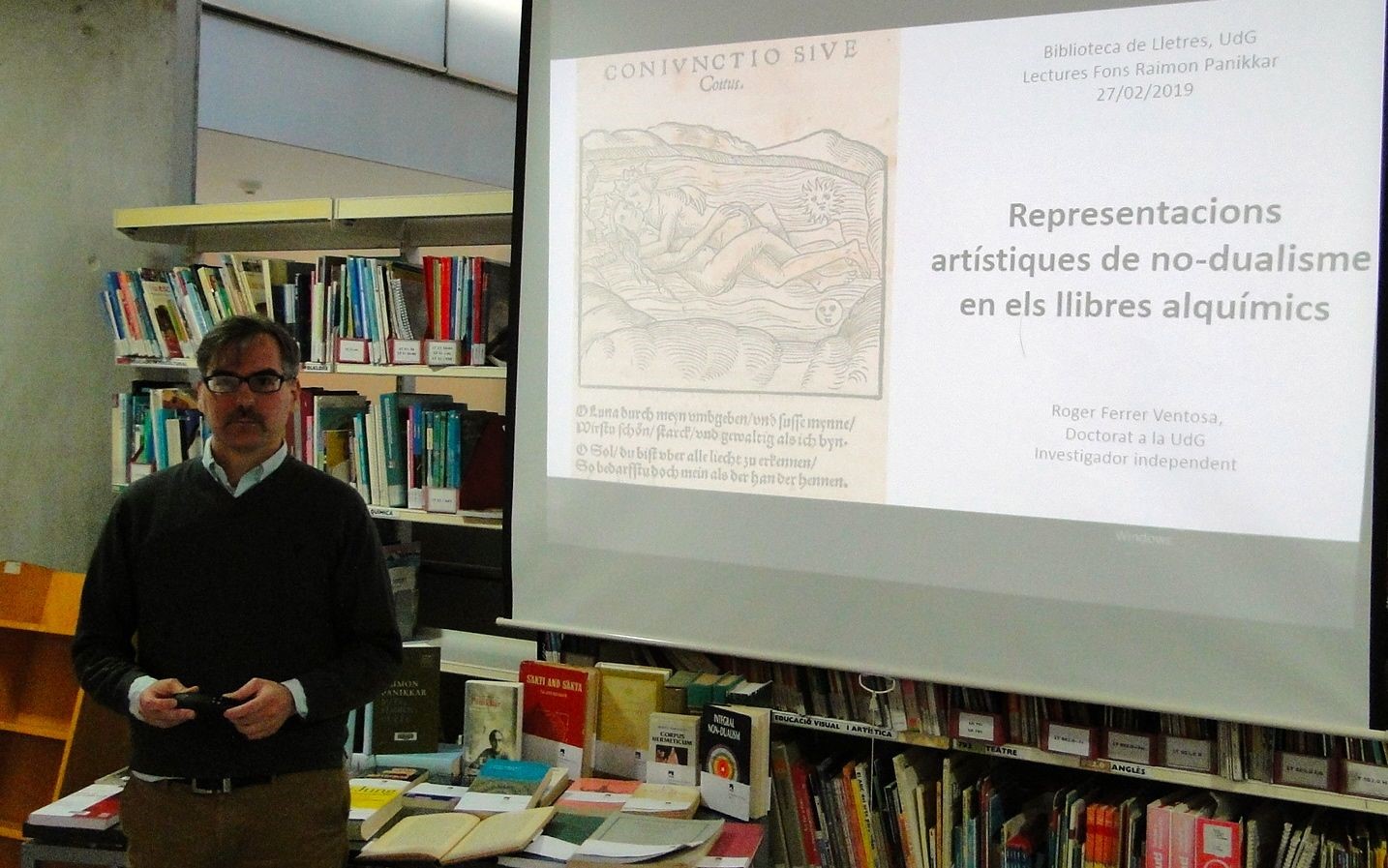
Artistic representations of non-dualism in alchemical books (XV-XVII century)
Roger Ferrer Ventosa, PhD in Humanities, BA in Art History and MA in Cultural Studies, and linked to the CIEBA research group at the University of Lisbon as a post-doctoral researcher. He has publications - articles and chapters - in various thematic areas: religious studies, cinematography, literature, cultural studies, anthropology of art, visual culture, history of philosophy, aesthetics, etc. He is a short story writer, with awards in various literary competitions, and author of a fantasy novel, La cabalgadora de sueños (ed. Digital 2010).
He has focused his research on the relationship between magical thinking and art theory, and on how images are an excellent tool for communicating ideas about the metaphysical, spiritual, religious or mystical, notions that would otherwise remain ineffable.
In his doctoral thesis, Mágica belleza. El pensamiento mágico como fundamento original de la teoría del arte, defended in 2018 at this university (UdG), the fourth chapter, “The demiurge becomes hemaphroditic. Non-dualism in the theory of art”, deals with non-dualism and how to capture it visually, especially in the books of alchemy engravings, which are the ones that are the focus of the presentation.
Being able to consult the Raimon Pannikar Fund (UdG) has been fundamental in his search, not only for the question of “non-duality”, for which he has been a basic author and source, but in the thesis as a whole. From the work of Raimon Panikkar, for the preparation of the thesis, his philosophical testament TEl ritme de l’Ésser. Les Gifford Lectures s (Opera Omnia Raimon Panikkar, X.1), Fragmenta, Barcelona, 2012, while from his Fund he found very useful the editions of Plotinus, by Henry Corbin, or the Hermetic texts.
To introduce the subject, Roger Ferrer exposes some of the epistemological qualities that images have, especially to refer to the divine, metaphysical or sacred. He then summarizes the aforementioned chapter of his thesis on non-dualism and the concretization of such a complex idea in more or less simple visual forms. The crux of the session lies in how this non-dualism manifests itself in alchemical picture books with various established iconographic motifs. Especially the hermaphrodite and the sacred marriage (hierogamy) are discussed.
Precisely the hierogamic image used as the cover of this reading is well known since, among other things, it is the cover of a 1973 Leonard Cohen album, New Skin The Old Ceremony , and it is very timely what his biographer tells us:
“The cover reproduces an alchemist-themed, Gnostic-inspired engraving from the Rosarium Philosophorum, a 16th-century text that had fascinated the Swiss psychiatrist and psychologist Carl Gustav Jung. It represents the coniunctio spirituum, the sacred spiritual union of the masculine and feminine principles; two angels making love in full flight. The alchemists were very much steeped in eroticism, but were rarely inclined to give a place of importance to the carnal act; occasionally, however, they agreed to see intercourse as a manifestation of coincidentia oppositorum (‘union of opposites’), as is the case in this illustration. Throughout his work, Cohen always demonstrated an articulate engagement with these concepts: yin and yang, eros and tanatos, exile and redemption, negation and affirmation, man and woman-an unfinished dictionary of spiritual ascent and descent, which is the key to the poet’s post-secular songbook. The language of alchemy was at Leonard’s beck and call, as he sought to bridge the original polarities of the soul”.
Alberto Manzano, Leonard Cohen y el Zen, Luciérnaga, Barcelona, 2018.
See here the document that served as the script of the session, a lecture published in a conference proceedings in Lisbon. Document that we would like as a basis and stimulus for future research on the importance of Panikkar’s advaita (non-dual / adual) perspective in intercultural studies.
See here the video recording of the session.
His doctoral thesis is also available.

